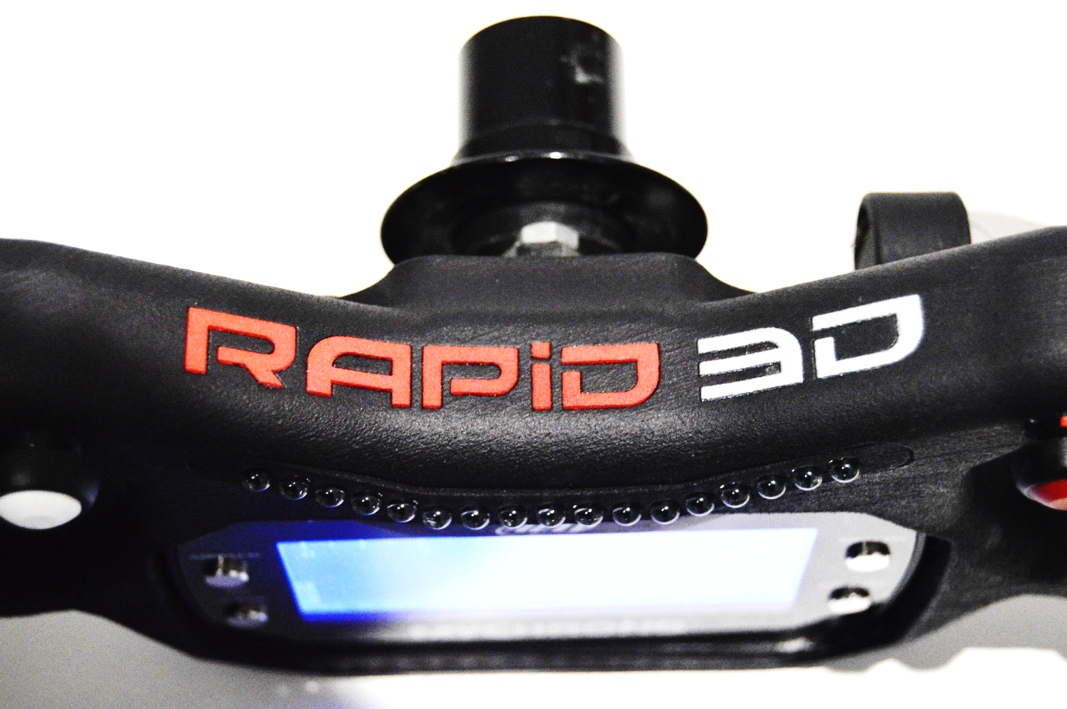This project was completed with the invaluable collaboration of

The brief for this project was the design of an ergonomic, light and aesthetically pleasing steering wheel for the NMU Eco Car team with integrated telemetry and driver controls.

This design project was categorized into 3 minor categories namely:
-
the design of the steering wheel structure,
-
the design of an integrated throttle paddle, and
-
the design of an integrated LED efficiency indicator.
This project had been enforced due to Rule & Regulation changes for the Shell Eco-Car Marathon which the NMU Eco Car team had been competing in for several years.
Previously, the vehicle's braking system operating levers had been mounted on the steering wheel (see below), but the rule changes necessitated foot operated braking pedals which meant the redesign of the exisiting steering wheel structure, which had been bulky and inorganic in any case, and severely hampered driver vision. The Rule change enabled a sleeker and more functional design to be considered while also making an opportunity to utilize Additive Manufacturing to create the component.
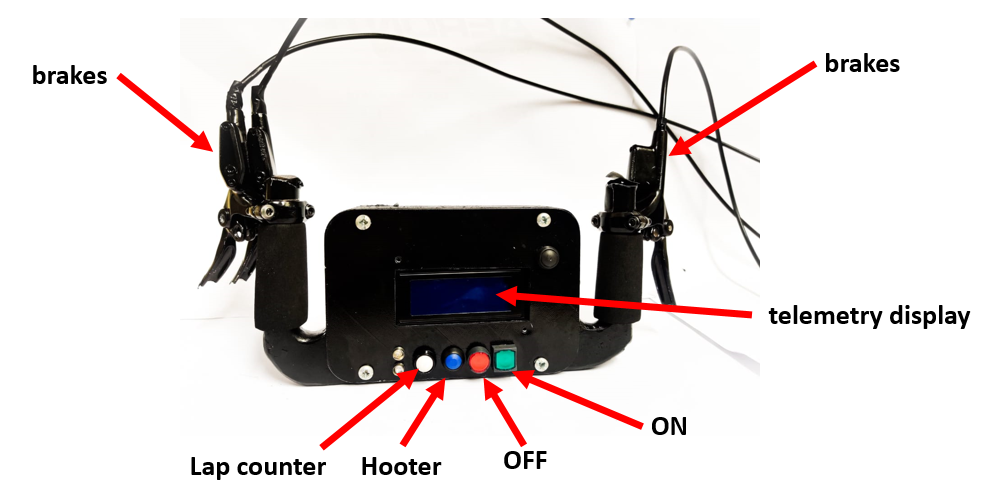
The previous steering wheel was designed mainly for basic functionality without consideration of the aesthetics, driver ergonomics and organics. It, while being functional, consisted of a simple integrated telemetry system which captured data and provided the driver with simple visual output via a small screen LED, and the Rule change enabled some more elaborate in-built options to be considered which the team had been wanting to do for some time.
Various designs were considered on the path to the final steering wheel as shown in the picture below.
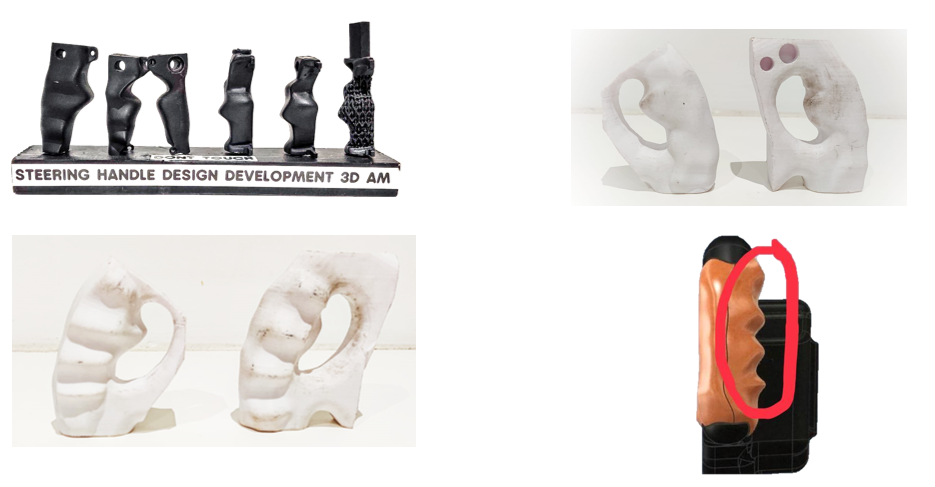
The first step in the design process of the new steering wheel was identifying the problems with the old versions and the needs in a new steering wheel design. After initial design constraints and challenges were identified, ideas were brainstormed and research was carried out regarding contemporary steering wheels in respect of ergonomics of both road and racing steering wheels and the ways electronics are integrated into them.
Then concepts were designed and 3D printed in-situ. This enabled initial concepts to be evaluated thoroughly in a physical sense, identifying errors and possible areas of improvement that would not have been apparent in purely a computational 3D model. This iterative process was very valuable, each time adding sometimes minute improvements to the design until a final design was created.
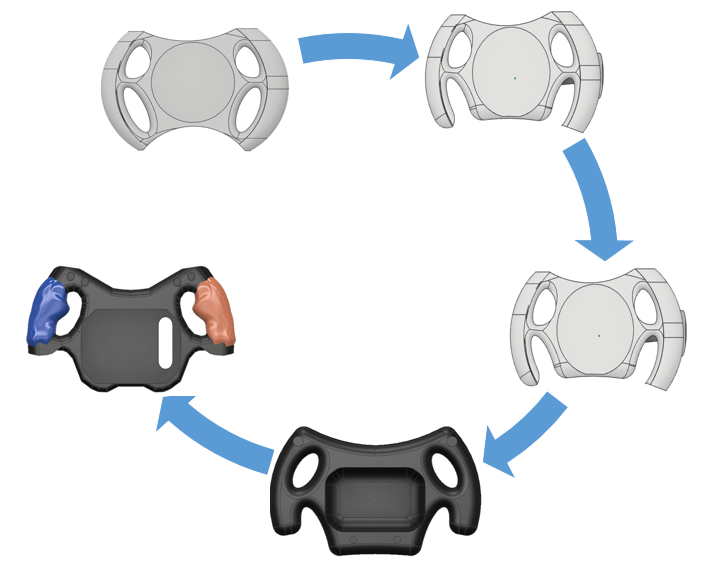
With the actual objective of this design challenge being to produce a consolidated, ergonomic aesthetically pleasing and functional design which featured integrated electronic components, driver controls and telemetry into one single compact functional structure as a first-time-right option, the challenge of the process required to reach the final design was thus streamlined.
The facilitation of intermediate iterative 3D printing, allowed driver fitment iro hand comfort and functionality, whilst also allowing interim installation of dummy parts into the vehicle itself so that both those fitment and vision needs were also taken care of. This would have been impossible to achieve via a computational platform only, and would have resulted in a costly final production of a structure with inherent functionality flaws.

With all envisaged challenges taken care of, a functional steering wheel design was able to be sent to Rapid3D to be manufactured, safe in the knowledge that the final design was as close to what was intended as possible.
The completed steering wheel is aesthetically pleasing with its ergonomic finger indentations, integrated electronics and is much more comfortable for the driver, whilst also providing better vision options as well as fitment around the driver's thighs when turning. Furthermore, it is much lighter and sleeker than the previous steering wheel and has extra functions such as the LED efficiency indicator and paddle accelerator.
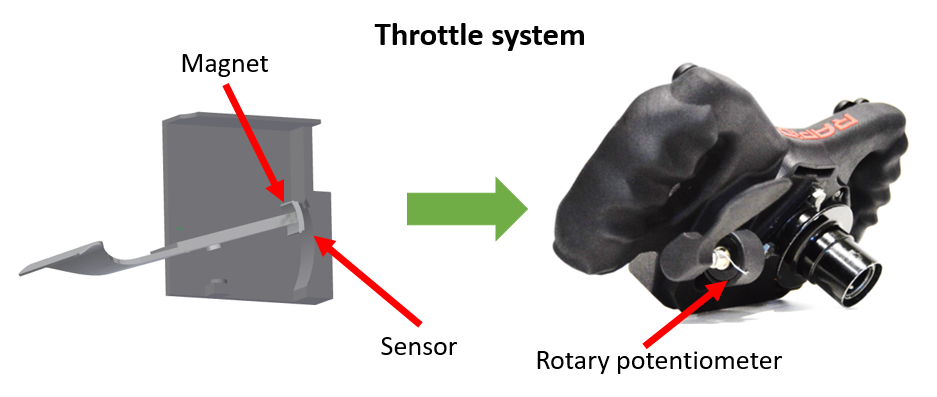
The steering wheel is printed in nylon, with a wall thickness of 2 mm and consists of an internal lattice support structure, ensuring the structural integrity while also ensuring that it is light and compact, and also reducing material wastage and hence creating a cost saving.

The steering wheel was printed by Rapid3D using powder bed fusion technology on a Pro x500 in Nylon, and then dyed black using a DyeMansion machine.
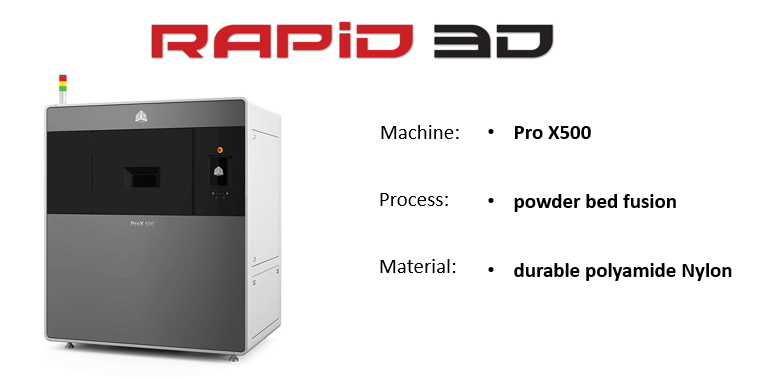
Our thanks go out to all at Rapid3D for all their invaluable assistance in the production of the Eco-Car Steering Wheel,
a very beautiful and functional example of what can be achieved when marrying engineering design with Additive Manufacturing.
